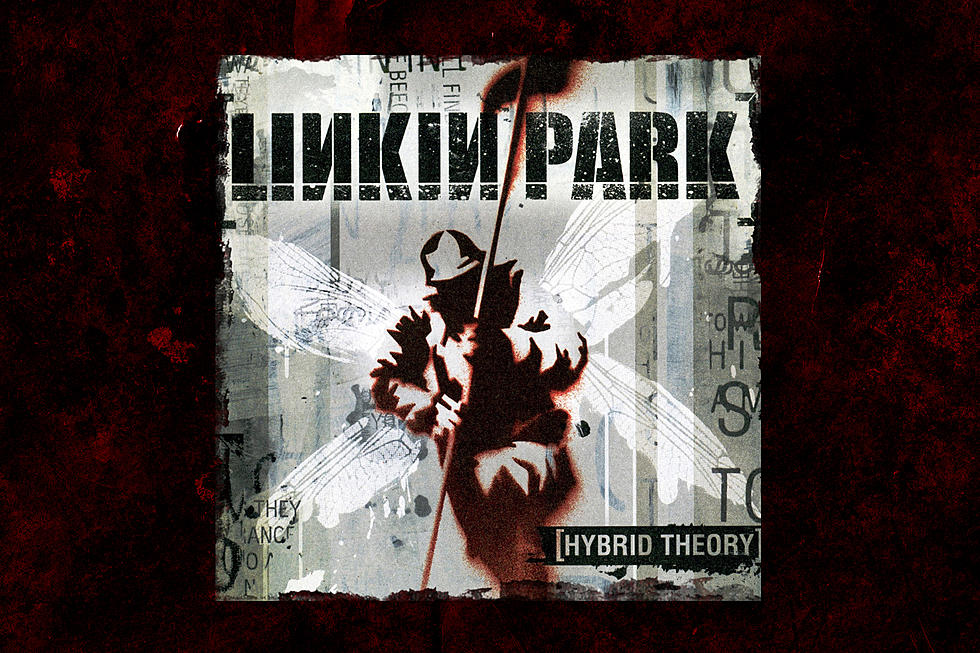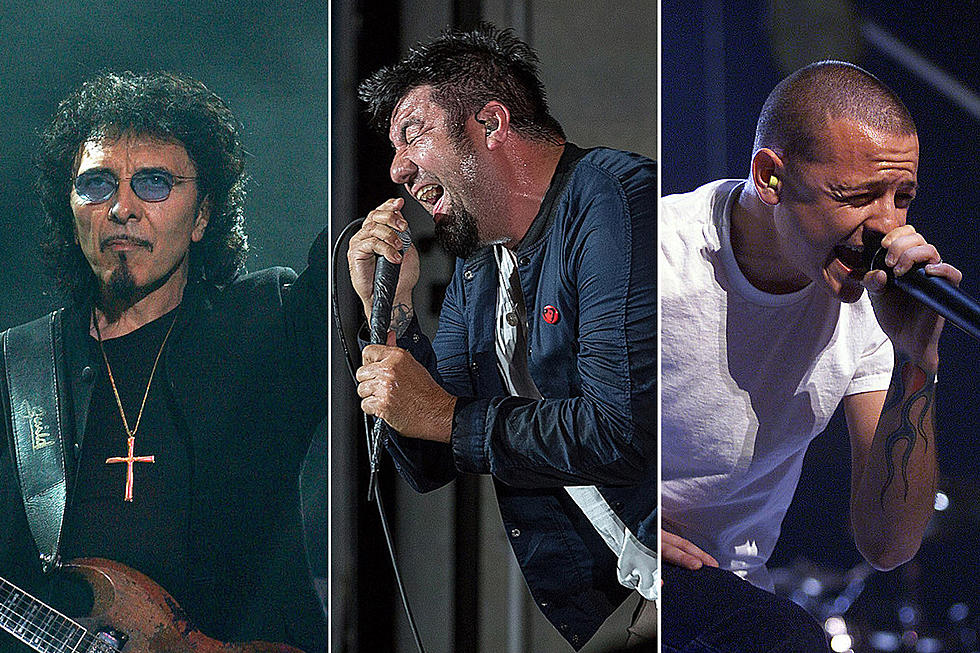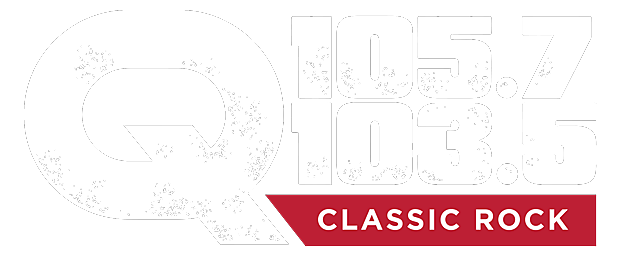
23 Years Ago: Linkin Park Unleash ‘Hybrid Theory’
Despite how it may have seemed, Linkin Park's breakout was not an overnight success. The band had their fair share of struggles before finally having things fall into place with the release of their monster debut album Hybrid Theory.
The group's roots trace back to the high school friendship of Mike Shinoda, the band's rapping co-vocalist, and Brad Delson, the group's guitarist. Their influences were diverse, with Shinoda being a fan of hip-hop and Delson digging on the guitar work of heavier acts like Deftones and Guns N' Roses.
Somewhere in between they found a blend and formed a group named Xero with drummer Rob Bourdon, turntablist Joe Hahn, bassist Dave "Phoenix" Farrell and vocalist Mark Wakefield. But something just wasn't clicking and a hard decision had to be made to part ways with Wakefield. Around the same time, Farrell got another gig touring with a band called Tasty Snax, and it looked like the band had hit a major roadblock.
Enter Jeff Blue, vice president of Zomba Music, who was aware of the group, felt they had something and helped them in their search for a new vocalist. He made the introduction between the SoCal group and a Phoenix-based vocalist named Chester Bennington from the band Grey Daze. Bennington got the call during a surprise birthday party in 1999 and received a package from Blue the following day with two Xero demos -- one with Wakefield's voice and the other an instrumental track.
After a few days, Bennington completed his vocals and sent the demos back, which resulted in an audition two days later. According to LP Association, Bennington's performance was so strong that the other vocalist auditioning for the band left the tryout before taking the mic. With Bennington in place, the band renamed themselves Hybrid Theory.
Linkin Park, "In the End" Demo Version
"He really was kind of the final piece of the puzzle, and he brings vocal talent that, when we were looking for a second vocalist, we didn't see anything close to his talent in anybody else," Delson told Madison.com.
The band started writing material together and even put together a self-titled demo tape, but still there were a few complications. A Welsh electronic group named Hybrid led the band once again to have to change their name, this time taking on Linkin Park as their new moniker, but as we know now Hybrid Theory stuck as the title of their debut disc. Over the next year, the band played a number of showcases, but ultimately it was Blue who helped the band in their move over to Warner Bros.
"We felt like, hey, we had stumbled upon something totally unique. And then as these other bands started coming out, bands that already had record deals that were being widely promoted to the world, we were like, 'Hey, crap, look at all these other groups are kind of doing what we're doing," recalled Delson, who added, "At that point [we said], 'Hey, we're obviously not the only band out there that's combining rap and rock. Let's be the best band out there that's playing rap and rock.'"
Linkin Park, Live in 2000
Helping in that aspect was producer Don Gilmore. "He wanted our lyric writing to be honest, but he also wanted it to be entertaining," says Delson. "In other words, he didn't want us to get too much into the 'poor me' thing of look at how many problems I have. You can talk about something that happened to you, but you can still do it in a witty or a storytelling way that's not just 'Hey, feel bad for me,' but this is something that happened to me, and here's an interesting way of explaining it."
The band settled into NRG Studios in North Hollywood, Calif. with Gilmore, ready to record their debut effort.
While in the studio, Farrell was still away playing with another band, so the band called upon Scott Koziol and Ian Hornbeck to lay down bass parts, while Delson himself also pulled some time on the low end. Farrell would eventually rejoin the group during the touring of Hybrid Theory, but did not appear on the album.
On Oct, 24, 2000, Linkin Park would release Hybrid Theory, unaware of the success that was to come. The first song out of the gate was "One Step Closer," a track that showcased the vocal mix of Shinoda and Bennington that fans would come to love.
Linkin Park, "One Step Closer" Music Video
Bolstered by the particularly aggressive "Shut up, shut up while I'm talking to you" Bennington delivery, the track became an instant favorite at radio and live. The song would peak at No. 5 on Modern Rock and No. 4 on Mainstream Rock, while the video for the track, directed by Gregory Dark, actually came from a concept suggested by Joe Hahn. It was his first foray into the music video world and over time Hahn would come to direct a number of the band's videos.
After a long run at radio with "One Step Closer," the band moved onto "Crawling" as the second single in early March of 2001. The heavy song dealt with the difficult subject matter of child abuse and Bennington's own battles with substance abuse. "It's easy to fall into that thing — 'poor, poor me', that's where songs like 'Crawling' come from," said Bennington to Rolling Stone.
"I can't take myself. But that song is about taking responsibility for your actions. I don't say 'you' at any point. It's about how I'm the reason that I feel this way. There's something inside me that pulls me down." Admittedly, the track was one of the more difficult ones for the singer to perform.
He told Spin, "'Crawling' has caused me the most trouble live more than any other song ... 'Crawling' is about feeling like I had no control over myself in terms of drugs and alcohol, hence the line 'These wounds they will not heal'." The song would climb to No. 5 on the Modern Rock chart and No. 3 on the Mainstream Rock chart, becoming their second straight Top 5 single.
Linkin Park, "Crawling" Music Video
In September of 2001, the band offered up "Papercut." Though the song was never officially released in the U.S., it reached No. 14 on the U.K. singles chart and hit No. 32 at Modern Rock Radio. Though not a major radio favorite, "Papercut" has become one of the band's live favorites, with Bennington stating it's one of his favorite Linkin Park tracks.
A full year after the album's release, Linkin Park had their biggest hit to date. "In the End," featuring a recognizable piano part, rhythmically rocking verses from Shinoda and Bennington's long-held vocal in the chorus, became the band's first No. 1 song on the Modern Rock chart. It fell just shy, at No. 3, on the Mainstream Rock chart.
Linkin Park, "In The End" Music Video
Bennington revealed to V Music that he completely missed the lure of the track initially. He explained, "I was never a fan of 'In The End' and I didn't even want it to be on the record, honestly. How wrong could I have possibly been? I basically decided at that point I don't know what the fuck I'm talking about, so I leave that to other people who are actually talented at somehow picking songs that people are going to like the most. It also gave me a good lesson, as an artist, that I don't necessarily have to only make music, in my band, that I want to listen to. More often than not, something that I like, very few other people like, and something that those people like is something that I kind of like, or don't like at all."
Over time, Bennington said he had grown to love the track and now sees how great the song is, but initially didn't view it as a single.
Other standouts from the album included the songs "Runaway" and "Points of Authority," the latter of which became a hit as Linkin Park served up their Reanimation remix album.
As Hybrid Theory grew in popularity, the accolades rolled in and the tours got better. The band counted invites to Ozzfest and Family Values among their earlier, profile-raising runs, and by the end of the album cycle, they were able to stage their own touring package known as Projekt Revolution.
Meanwhile, the music community took notice. Linkin Park won a Grammy for Best Hard Rock Performance in 2002 for "Crawling" and received a Best Rock Video at the MTV Video Music Awards for "In the End." By the time the album cycle was complete, the disc peaked at No. 2 on the Billboard 200 album chart, became the biggest selling album of 2001 and eventually was certified by the RIAA for over 10 million units sold and later reached 12 million units.
See Hybrid Theory in the 20 Biggest Selling Hard Rock + Metal Albums in the U.S.
More From Q 105.7










